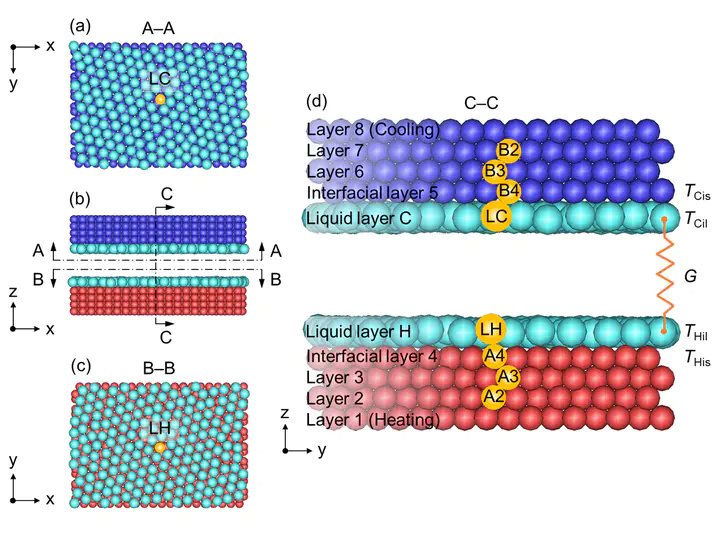Enhanced heat transfer across a nanogap by thermal resonance between adsorbed liquid layers

Abstract
Phonon transmission across a vacuum gap can be induced by quasi-Casimir coupling between interfacial layers without electromagnetic fields. However, there is still a lack of understanding of heat transfer across a nanogap via liquid layers adsorbed on superhydrophilic solid surfaces. Herein, classical nonequilibrium molecular dynamics simulations were carried out to clarify phonon transmission across the nanogap induced by the quasi-Casimir coupling at the solid–liquid interface. The dimensions of simulation system were Lx = 5.552 nm, Ly = 3.847 nm, and Lz = 2.402–4.169 nm. The gap distance D between two solid walls ranged from 0.588 to 2.352 nm. Each solid wall was constructed of 1280 platinum atoms. The smaller distance d of 0.193–2.057 nm was obtained due to the liquid layers of 190–380 argon atoms adsorbed on the solid surfaces. The molecular interactions were modeled by the Lennard-Jones potential. Periodic boundary conditions were employed along the x- and y-directions. We found that the net heat flux q across the nanogap is enhanced significantly owing to the thermal resonance between two liquid layers compared with the cases of vacuum gap.